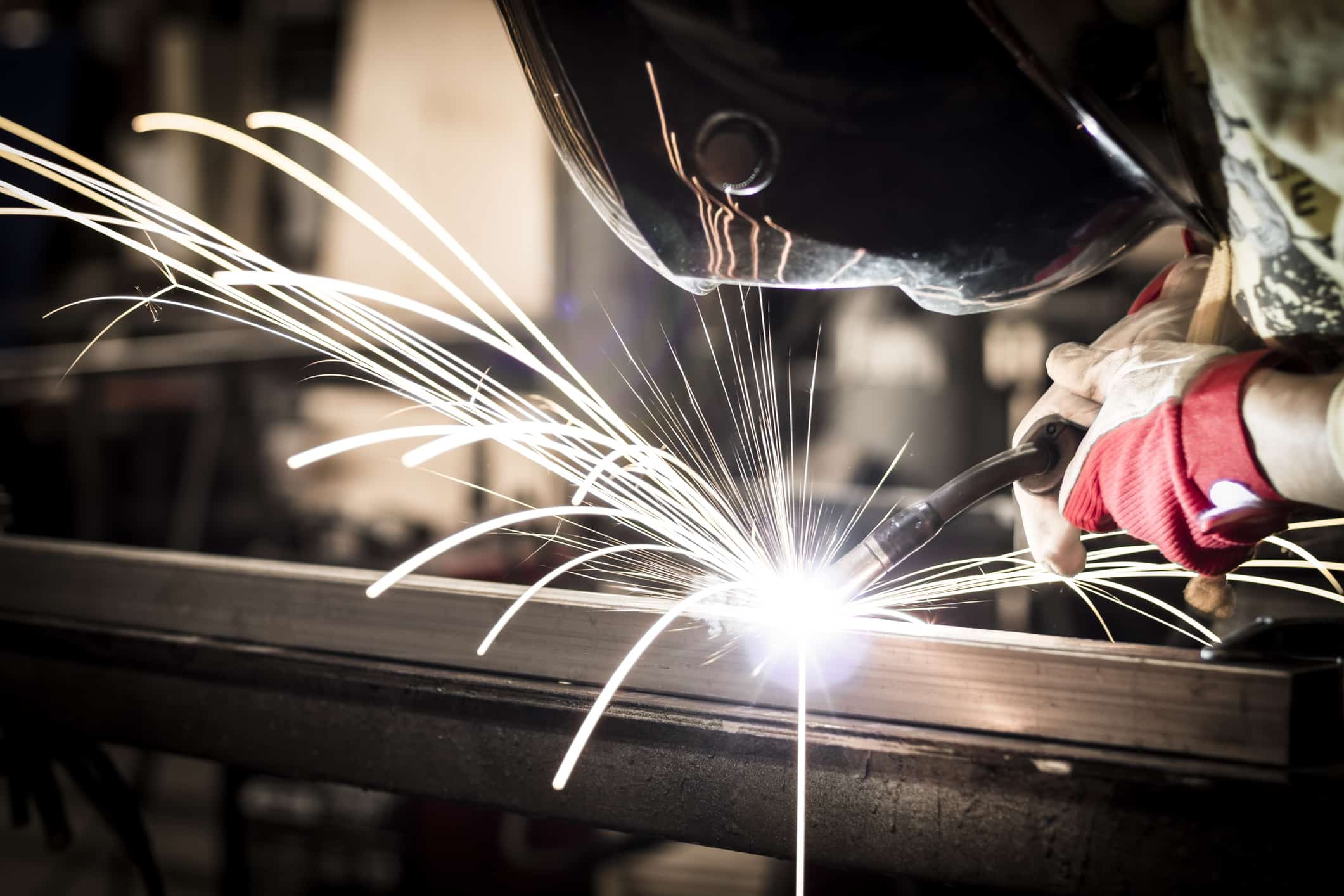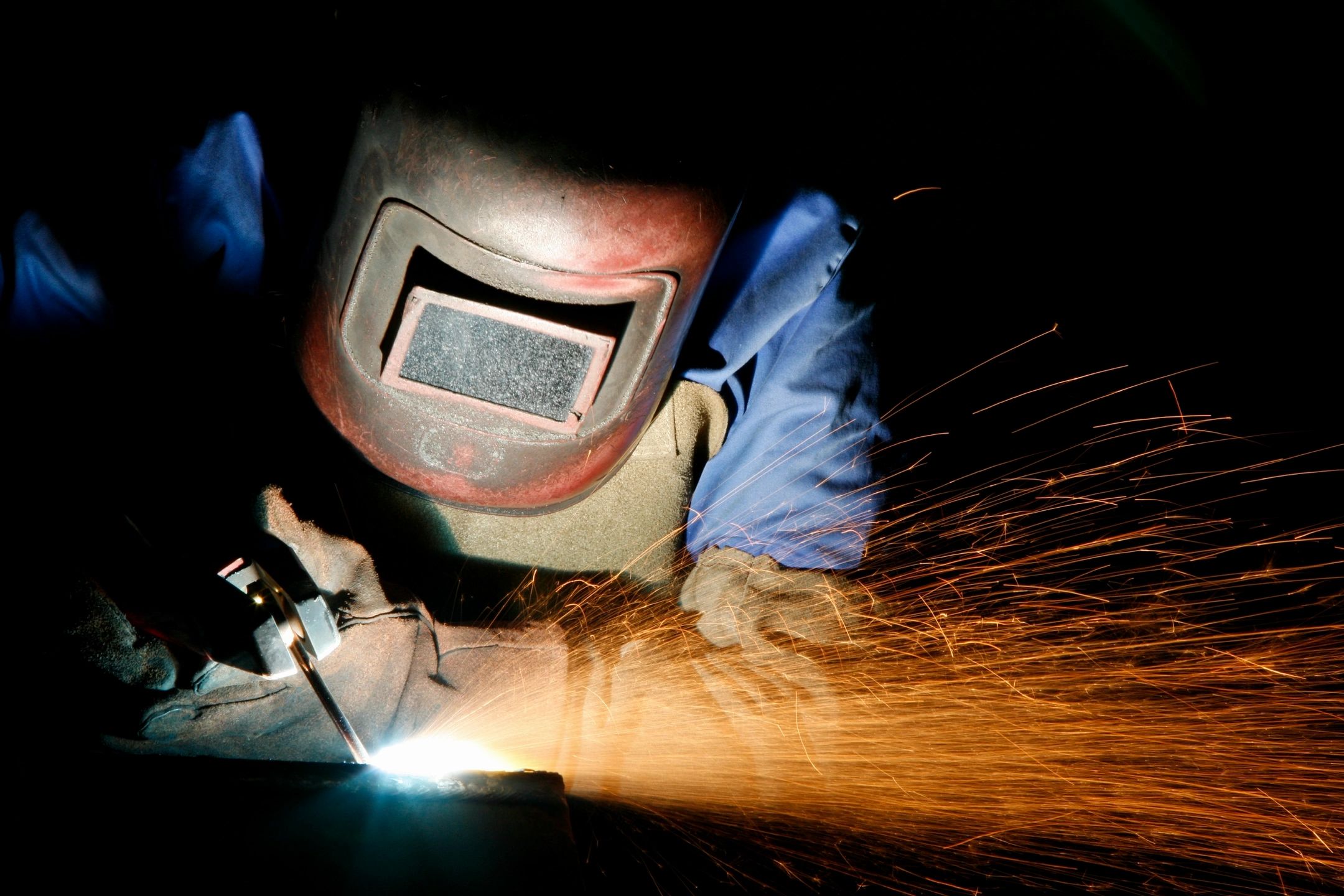Everything about Welding: Trick Insights Into Techniques and Finest Practices for Success
Welding includes a range of techniques, each fit for particular products and applications. Recognizing these techniques, such as GMAW, SMAW, and TIG, is vital for attaining optimal outcomes. In addition, the appropriate devices and security practices can not be ignored. As preparation and repairing play vital duties in the welding procedure, grasping these elements can considerably improve the quality of the end product. What are the crucial variables that guarantee a successful weld?
Recognizing Different Welding Methods
Welding methods encompass a range of approaches, each suited to details applications and products. Among one of the most common methods are Gas Steel Arc Welding (GMAW), Secured Metal Arc Welding (SMAW), and Tungsten Inert Gas Welding (TIG) GMAW, also called MIG welding, is popular for its speed and flexibility, making it optimal for slim products. SMAW, or stick welding, is preferred for its simpleness and performance in outdoor settings, specifically with thicker metals. TIG welding uses precision and control, making it appropriate for intricate work and non-ferrous steels (Montana Mobile Welding and Repair Belgrade Welding). Each strategy has its unique benefits and factors to consider, enabling welders to choose the very best method based upon the task's demands, material kind, and preferred outcomes. Comprehending these strategies is crucial for successful welding
Vital Welding Equipment and Tools
While numerous welding strategies need details skills, the ideal equipment and devices are just as crucial for accomplishing quality outcomes. Essential welding tools includes welding equipments, which vary depending upon the technique-- such as MIG, TIG, or stick welding. Safety gear, consisting of aprons, gloves, and headgears, assurances safety and convenience during the process. Furthermore, clamps and fixtures aid safeguard products in place, guaranteeing precision in welds. Consumables like welding poles, cable, and protecting gas are additionally critical elements that affect the quality of the weld. Additionally, tools such as cutters and mills promote surface area preparation and post-weld ending up, contributing to an expert outcome. Purchasing high-quality equipment inevitably improves the performance and performance of welding tasks.
Safety And Security Practices in Welding
Correct security techniques are necessary in the welding market to protect employees from prospective hazards. Welders must wear proper individual protective equipment (PPE), consisting of helmets with appropriate shading, handwear covers, and flame-resistant clothing. Adequate ventilation is important to reduce exposure to unsafe fumes and gases generated throughout the welding procedure. Additionally, employees need to be learnt the appropriate handling of welding tools to stop accidents. Fire security steps, such as keeping flammable materials far from the welding location and having fire extinguishers easily offered, are needed. Routine examinations of equipment and work areas can help determine potential dangers before they lead to accidents. By sticking to these safety and security practices, welders can produce a more secure working setting and decrease risks related to their trade.
Preparing Materials for Welding
Preparing products for welding is a crucial action that substantially influences the top quality and integrity of the final product (Montana Mobile Welding and Repair Belgrade Fabrication). Proper preparation includes cleaning up the surface areas to eliminate impurities such as rust, dirt, and oil, which can compromise the weld. Methods such as grinding, sanding, or utilizing solvents are frequently used to attain a tidy surface area. Additionally, ensuring that the products fit with each other snugly is essential; gaps can cause weak welds. It's additionally important to take into consideration the positioning and positioning of the parts, as this will certainly affect the ease of welding and the last result. Ultimately, choosing the proper filler product and ensuring compatibility with the base steels is important for accomplishing solid, sturdy welds
Tips for Achieving High-Quality Welds
Achieving premium welds calls for interest to information and adherence to ideal practices throughout the welding process. Proper joint preparation is vital, ensuring surface areas are totally free and tidy from pollutants. Picking the suitable filler product and welding method based upon the base metals is crucial for optimal bonding. Maintaining consistent traveling speed and angle while welding can avoid problems and promote uniformity. Additionally, regulating warm input is crucial; excessive warm can cause bending and compromised joints. On a regular basis inspecting the welds throughout the process allows for immediate modifications if required. Finally, using appropriate post-weld therapies, such as cleansing and stress alleviation, can improve the toughness and stability of the weld, ultimately guaranteeing an effective result.
Fixing Typical Welding Issues
Welding often offers difficulties that can affect the top quality and stability of the end product. Common issues such as porosity, inconsistent weld beads, and overheating can emerge, each needing specific fixing methods. Recognizing these issues is necessary for welders to enhance their skills and attain excellent results.
Porosity Problems Discussed
Porosity can commonly be neglected, it continues to be a crucial concern in welding that can compromise the stability of an ended up item. Porosity refers to the existence of little gas pockets within the weld bead, which can deteriorate the joint and lead to premature failure. This trouble commonly occurs from impurities, moisture, or improper shielding gas coverage during the welding procedure. To minimize porosity, welders ought to confirm that the base materials are dry and tidy, make use of proper shielding gases, and keep consistent welding parameters. Regularly inspecting the equipment and environment can also assist identify prospective concerns prior to they materialize in the weld. Attending to porosity properly is essential for achieving solid, resilient welds that satisfy top quality standards.

Inconsistent Weld Beads
Inconsistent weld grains can greatly impact the quality and strength of an ended up item. Various aspects contribute to this concern, including incorrect traveling rate, incorrect amperage setups, and inconsistent electrode angles. When the welder relocates too quickly, a bead might show up narrow and do not have infiltration, while relocating as well gradually can cause too much build-up. In addition, utilizing the incorrect amperage can lead to either undercutting or excessive spatter, both of which concession weld honesty. The welder's strategy, such as inconsistent the original source torch motion, can likewise cause unequal bead look. To mitigate these problems, welders must concentrate on maintaining constant, controlled activities why not look here and guaranteeing appropriate tools setups to achieve harmony in their welds. Consistency is key to attaining strong and reputable welds.
Getting Too Hot and Warping Issues
Excessive warmth throughout the welding process can bring about substantial getting too hot and contorting problems, impacting the architectural honesty of the workpiece. These problems often materialize as distortion, which can endanger positioning and fit-up, making more assembly challenging. Factors adding to overheating include the selection of welding criteria, such as voltage and travel speed, along with the sort of product being bonded. To mitigate these issues, welders should maintain consistent travel rate and proper warm input while keeping an eye on the work surface temperature. Additionally, pre-heating or webpage post-weld heat treatment can aid reduce stresses created by fast cooling - Montana Mobile Welding and Repair Belgrade Fabrication. Regular inspection and adherence to best practices are vital in protecting against getting too hot and making certain the longevity and reliability of bonded frameworks
Regularly Asked Questions
What Are the Profession Opportunities in the Welding Market?
The welding sector provides diverse job opportunities, including settings as welders, inspectors, instructors, and engineers. Professionals can operate in production, building and construction, aerospace, and automobile sectors, profiting from solid need and affordable incomes in numerous roles.
Just How Can I Improve My Welding Speed Without Sacrificing High Quality?
To boost welding speed without compromising high quality, one must exercise effective techniques, preserve tools, maximize setups, and enhance hand-eye sychronisation. Routine training and looking for responses can likewise greatly add to achieving much faster, high-grade welds.
What Qualifications Are Available for Welders?
Many certifications exist for welders, consisting of those from the American Welding Culture (AWS), the National Facility for Building And Construction Education And Learning and Study (NCCER), and numerous industry-specific companies. These qualifications enhance employability and demonstrate skill efficiency.
Exactly How Does Welding Impact the Residences of Metals?
Welding influences the homes of metals by changing their microstructure, which can lead to changes in solidity, stamina, and ductility. Warmth input and cooling rates during the procedure significantly impact these product qualities.
Can I Weld Dissimilar Metals Together?
